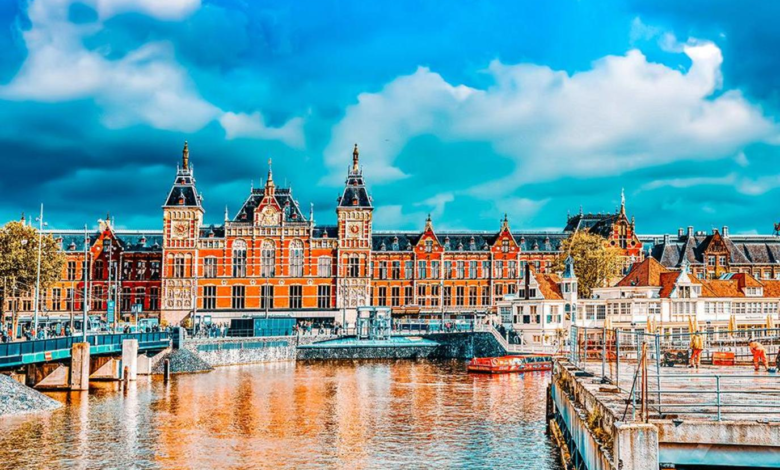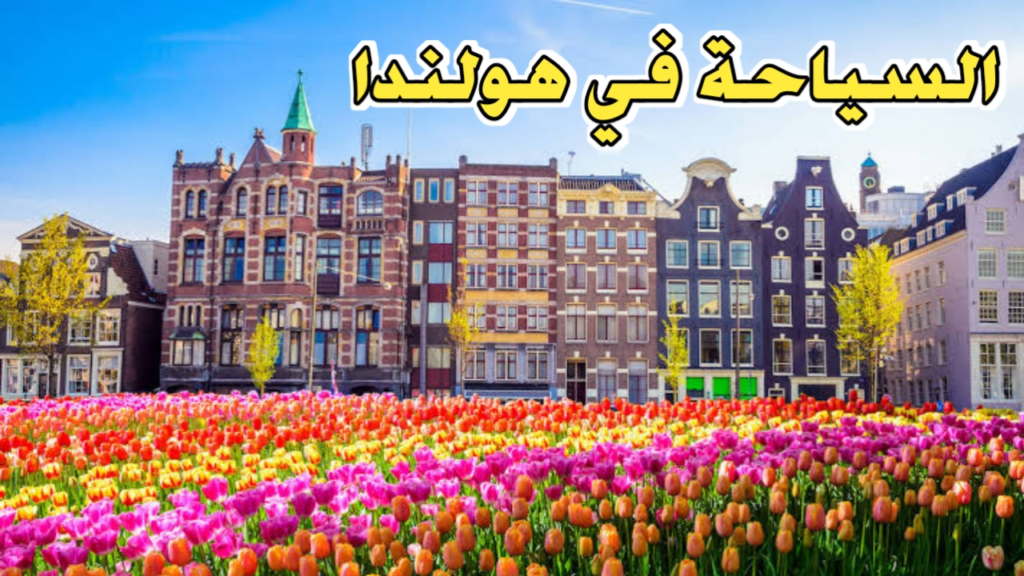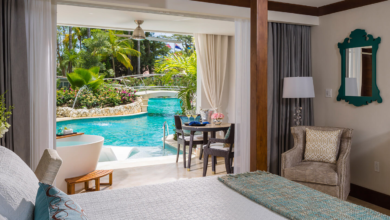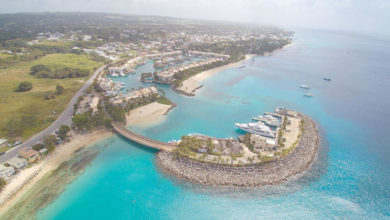Exploring the Netherlands: Travel and Tourism Guide Plus the Fastest Ways to Get Between Dutch Cities

Introduction:
The Netherlands, with its picturesque landscapes, historic cities, and vibrant culture, is a charming destination that offers a wide range of experiences for travelers. From the iconic canals of Amsterdam to the windmills of Kinderdijk and the tulip fields of Keukenhof, this small European country has much to offer. In this travel and tourism guide, we’ll explore some of the must-visit cities in the Netherlands and highlight the fastest modes of transportation for seamless travel between them.
- Amsterdam:
Amsterdam, the capital city, is a vibrant hub of art, culture, and history. Explore the world-class museums, including the Van Gogh Museum and the Rijksmuseum, stroll along the historic canals, and visit the Anne Frank House. Don’t miss the colorful Bloemenmarkt (flower market) and the lively atmosphere of the Jordaan neighborhood.
Fastest way to travel to/from Amsterdam:
The Netherlands has an extensive and efficient public transportation system. The fastest way to travel between Amsterdam and other Dutch cities is by train. The Dutch Railways (NS) operates frequent intercity and high-speed trains, connecting Amsterdam with major cities like Rotterdam, The Hague, Utrecht, and Eindhoven. Journey times are usually under an hour, making train travel the most convenient option.
- Rotterdam:
Known for its modern architecture, Rotterdam is a dynamic city with a bustling port and a vibrant cultural scene. Explore the innovative Markthal, visit the iconic Euromast for panoramic views, and enjoy the lively waterfront area of the Kop van Zuid. Don’t miss the impressive Rotterdam Central Station, a masterpiece of architecture.
Fastest way to travel to/from Rotterdam:
The train is the fastest mode of transportation for traveling between Rotterdam and other Dutch cities. With excellent rail connections, you can easily reach cities like Amsterdam, The Hague, Utrecht, and Delft in a short time. High-speed trains, such as the Intercity Direct, offer quick travel times, ensuring a smooth journey.
- The Hague (Den Haag):
As the seat of the Dutch government and home to many international organizations, The Hague is a city of diplomacy and culture. Visit the iconic Binnenhof complex, explore the renowned Mauritshuis museum with its collection of Dutch masterpieces, and take a stroll on the beautiful Scheveningen beach.
Fastest way to travel to/from The Hague:
The Hague has excellent train connections to other Dutch cities. The intercity trains from The Hague Central Station provide quick access to Amsterdam, Rotterdam, Utrecht, and other major destinations. Journey times are usually around 30 minutes to an hour, making train travel the fastest and most convenient option.
- Utrecht:
Utrecht, with its charming canals, historic buildings, and lively atmosphere, offers a unique Dutch experience. Climb the Dom Tower for panoramic views, explore the medieval city center, and visit the intriguing Museum Speelklok, dedicated to self-playing musical instruments.
Fastest way to travel to/from Utrecht:
Similar to other Dutch cities, Utrecht benefits from an excellent train network. The train is the fastest way to travel between Utrecht and other Dutch cities, with frequent services connecting it to Amsterdam, Rotterdam, The Hague, and other destinations. Journey times are typically around 30 minutes to an hour.
The Netherlands is a fascinating country with a rich history, cultural heritage, and a forward-thinking approach to innovation and sustainability. From its colonial past to its commitment to renewable energy, the Netherlands continues to make its mark on the world stage.

as well as additional details about the fastest ways to get between Dutch cities:
- Eindhoven:
Eindhoven is a vibrant city known for its innovative design and technology. It is home to the renowned Design Academy and the Philips Museum, which showcases the city’s industrial heritage. Explore the Strijp-S district, filled with creative spaces, trendy shops, and restaurants. Don’t miss the Van Abbemuseum, one of the leading contemporary art museums in Europe.
Fastest way to travel to/from Eindhoven:
Eindhoven is well-connected by train to other major Dutch cities. The train station, Eindhoven Centraal, offers frequent services to Amsterdam, Rotterdam, The Hague, Utrecht, and other destinations. High-speed trains, such as the Intercity Direct, provide quick and efficient travel with journey times ranging from around 1 to 1.5 hours.
- Maastricht:
Situated in the southern part of the Netherlands, Maastricht is a charming city with a rich history and a unique blend of Dutch and Belgian influences. Explore the historic Vrijthof square, visit the impressive Basilica of Saint Servatius, and wander through the picturesque streets of the Old Town. Maastricht is also known for its vibrant culinary scene and lively café culture.
Fastest way to travel to/from Maastricht:
Maastricht has good train connections to other Dutch cities. Direct intercity trains operate between Maastricht and Amsterdam, Rotterdam, The Hague, and Utrecht, providing a convenient and time-efficient way to travel. Journey times can range from around 2 to 2.5 hours depending on the destination.
- Groningen:
Located in the northeastern part of the Netherlands, Groningen is a vibrant university city with a lively atmosphere. Explore the historic center with its iconic Martini Tower, visit the Groninger Museum showcasing modern and contemporary art, and enjoy the vibrant nightlife and café culture. Groningen is also known for its extensive cycling paths, making it a cycling-friendly city.
Fastest way to travel to/from Groningen:
Groningen is well-connected to other Dutch cities by train. The intercity trains from Groningen Central Station provide direct connections to Amsterdam, Rotterdam, The Hague, and Utrecht. Journey times from Groningen to these cities can vary but typically range from around 2.5 to 3 hours.
Transportation Tips:
- The Netherlands has an efficient and extensive railway network operated by the Dutch Railways (NS). Trains are generally the fastest and most convenient mode of transportation between Dutch cities.
- It is recommended to purchase an OV-chipkaart, a rechargeable smart card, for seamless travel on public transportation, including trains, trams, and buses.
- High-speed trains, such as the Intercity Direct or the Thalys, offer quicker travel times between major cities.
- The Dutch public transportation system also includes buses and trams, which are useful for local travel within cities and towns.
Remember to check train schedules, plan your routes in advance, and allow for some flexibility in your itinerary. With efficient transportation options, exploring the Netherlands and traveling between its cities is a convenient and enjoyable experience.

some additional information on travel and tourism in the Netherlands, along with more details about the fastest ways to get between Dutch cities:
- Haarlem:
Located just a short distance from Amsterdam, Haarlem is a charming city known for its well-preserved historic center and cultural attractions. Explore the Grote Markt (Grand Market Square) with its imposing St. Bavo’s Church, visit the Frans Hals Museum to admire Dutch Golden Age artwork, and take a leisurely boat tour along the canals. Haarlem also offers excellent shopping and dining experiences.
Fastest way to travel to/from Haarlem:
Haarlem is easily accessible from Amsterdam by train, with frequent connections between the two cities. The journey from Amsterdam Centraal to Haarlem takes just around 15 minutes, making it a quick and convenient option for a day trip or as a base for exploring the region.
- Leiden:
As a charming university city, Leiden is famous for its rich history and cultural heritage. Visit the birthplace of Rembrandt at the Rembrandt House Museum, explore the Leiden University Botanical Garden, and take a peaceful stroll along the picturesque canals. Leiden’s historical city center is filled with beautiful buildings, museums, and charming cafés.
Fastest way to travel to/from Leiden:
Leiden benefits from excellent train connections to other Dutch cities. Direct intercity trains operate from Leiden Centraal to Amsterdam, Rotterdam, The Hague, and Utrecht, providing efficient travel options. Journey times can range from around 15 minutes to 1 hour, depending on the destination.
- Delft:
Delft is a small city renowned for its historical architecture, Delftware (blue pottery), and being the birthplace of the famous Dutch painter, Johannes Vermeer. Visit the Royal Delft pottery factory, explore the charming streets of the old town, and admire the iconic Nieuwe Kerk (New Church) and its towering bell tower. Delft exudes a relaxed and picturesque atmosphere.
Fastest way to travel to/from Delft:
Delft is well-connected to other Dutch cities by train. Intercity trains from Delft station provide convenient connections to cities like Amsterdam, Rotterdam, The Hague, and Utrecht. Journey times can vary but usually range from around 15 minutes to 1 hour.
Transportation Tips (Continued):
- The Netherlands has an extensive network of cycling paths, and renting a bicycle is a popular and enjoyable way to explore cities and the countryside.
- For longer distances or travel to more remote areas, domestic flights within the Netherlands are generally not necessary due to the efficiency of the train network.
- When traveling by train, it is advisable to check the NS website or use a smartphone app for real-time train schedules, platform information, and any potential disruptions.
The Netherlands offers a wealth of cultural, historical, and natural attractions, and the country’s efficient transportation system makes it easy to explore various cities and regions. Whether you’re interested in art, history, picturesque canals, or vibrant urban centers, the Netherlands has something to offer every visitor.

additional information on travel and tourism in the Netherlands, along with more details about the fastest ways to get between Dutch cities:
- The Frisian Islands:
The Frisian Islands, located in the northern part of the Netherlands, are a group of picturesque islands known for their stunning beaches, sand dunes, and unique ecosystems. Some of the popular islands to visit include Texel, Vlieland, Terschelling, and Ameland. These islands offer opportunities for outdoor activities such as cycling, hiking, birdwatching, and relaxing on the beautiful beaches.
Fastest way to travel to/from the Frisian Islands:
To reach the Frisian Islands, you can take a combination of train and ferry services. From major cities like Amsterdam, you can travel by train to the ferry ports such as Den Helder or Harlingen, and then take a ferry to the specific island you wish to visit. Ferry services operate regularly, and journey times can vary depending on the island, ranging from around 30 minutes to a few hours.
- Zeeland:
Zeeland is a province in the southwestern part of the Netherlands known for its stunning coastline, charming villages, and water sports opportunities. Explore the historic city of Middelburg, visit the Delta Works—a series of impressive engineering marvels designed to protect the region from flooding—and enjoy the beautiful beaches and scenic coastal landscapes.
Fastest way to travel to/from Zeeland:
Zeeland is well-connected to other Dutch cities by train and bus services. The train is the fastest way to reach cities like Middelburg and Vlissingen, with journey times ranging from around 2 to 3 hours from Amsterdam. Once in Zeeland, local buses and cycling are convenient options for exploring the various towns and attractions within the province.
- National Parks:
The Netherlands boasts several national parks that offer opportunities for nature lovers and outdoor enthusiasts. Some notable national parks include Hoge Veluwe National Park, with its diverse landscapes and the famous Kröller-Müller Museum; De Biesbosch National Park, known for its wetlands and waterways; and Weerribben-Wieden National Park, characterized by its picturesque canals and marshlands.
Fastest way to travel to/from National Parks:
To reach national parks in the Netherlands, a combination of train and bus services is often the most convenient option. Trains provide easy access to nearby cities or towns, and from there, local buses or cycling routes can take you to the national parks. Journey times can vary depending on the specific park and its proximity to major cities.
Transportation Tips (Continued):
- The Netherlands has an extensive network of well-maintained cycling paths, making it a cyclist-friendly country. Consider renting a bicycle to explore cities, towns, and the countryside at a leisurely pace.
- When traveling between cities, it’s advisable to check the train schedules in advance and consider purchasing tickets in advance online or at the train stations.
- Public transportation cards, such as the OV-chipkaart, are convenient for seamless travel on trains, buses, trams, and ferries. These cards can be easily topped up at various locations.
- The Dutch railway system offers various types of tickets, including single-use tickets, day passes, and discounted group tickets. Choose the option that suits your travel needs best.
The Netherlands is a diverse and captivating country, offering a mix of vibrant cities, stunning natural landscapes, and cultural attractions. With its efficient transportation system and a plethora of exciting destinations, exploring the Netherlands is an enriching experience for travelers of all interests.

more information on travel and tourism in the Netherlands, including details about iconic landmarks, cultural events, and local cuisine:
- Windmills:
The Netherlands is famous for its iconic windmills, which are an integral part of its cultural heritage. Kinderdijk, located near Rotterdam, is a UNESCO World Heritage site and home to a group of 19 well-preserved windmills. Zaanse Schans, near Amsterdam, is another popular destination where you can explore historic windmills and learn about traditional Dutch crafts. - Keukenhof Gardens:
Keukenhof Gardens, located near Lisse, is one of the world’s largest flower gardens and a must-visit attraction, especially during springtime. The gardens are renowned for their vibrant displays of tulips, daffodils, hyacinths, and other spring flowers. Visitors can enjoy leisurely walks, bike rides, and boat tours in the surrounding area, known as the “Flower Bulb Region.” - Festivals and Events:
The Netherlands hosts numerous festivals and events throughout the year. King’s Day, celebrated on April 27th, is a nationwide celebration in honor of the King’s birthday, characterized by vibrant street parties, live music, and orange-colored festivities. The Amsterdam Dance Event (ADE) is one of the world’s largest electronic music festivals, attracting renowned DJs and music enthusiasts. The International Film Festival Rotterdam (IFFR) showcases a wide range of international films and is a significant event in the global film industry. - Dutch Cuisine:
Dutch cuisine offers a variety of delicious dishes to sample. Some traditional Dutch foods include:
- Stroopwafels: Thin, caramel-filled waffle cookies popular as a sweet treat.
- Bitterballen: Deep-fried, crispy meatballs served with mustard, often enjoyed as a snack with drinks.
- Haring (Herring): Raw or pickled herring served with onions and pickles, a popular street food item.
- Stamppot: A hearty dish made with mashed potatoes mixed with vegetables like kale or sauerkraut, often served with smoked sausage.
- Dutch cheeses: The Netherlands is renowned for its cheeses, such as Gouda, Edam, and Leiden, which can be sampled at local markets and cheese shops.
- Canals of Amsterdam:
Amsterdam is famous for its picturesque canals, which form an intricate network throughout the city. Taking a canal cruise is a popular way to explore Amsterdam’s historic canal belt, designated as a UNESCO World Heritage site. Along the canals, you’ll find charming canal houses, bridges, and bustling waterfront cafés. - Museums and Art Galleries:
The Netherlands is home to world-class museums and art galleries. The Rijksmuseum in Amsterdam houses an extensive collection of Dutch masterpieces, including Rembrandt’s “The Night Watch.” The Van Gogh Museum exhibits the works of the renowned Dutch painter, Vincent van Gogh. Other notable museums include the Mauritshuis in The Hague, showcasing Dutch Golden Age paintings, and the Kröller-Müller Museum in Hoge Veluwe National Park, known for its collection of Vincent van Gogh’s works and outdoor sculpture garden.
The Netherlands offers a wealth of cultural experiences, historical landmarks, and natural beauty. Whether you’re exploring windmills, enjoying colorful tulip fields, or immersing yourself in Dutch art and cuisine, there is always something captivating to discover in the Netherlands.

information on travel and tourism in the Netherlands, including details about architecture, outdoor activities, and regional specialties:
- Dutch Architecture:
The Netherlands boasts a rich architectural heritage, ranging from medieval buildings to modern and innovative designs. The traditional Dutch architecture is characterized by tall, narrow canal houses with gabled facades, such as those found in Amsterdam and other historic cities. Modern architectural masterpieces can be seen in Rotterdam, known for its skyline featuring bold structures like the Cube Houses and the Erasmus Bridge. The Netherlands also has unique examples of contemporary architecture, including the Eye Film Museum in Amsterdam and the Groninger Museum in Groningen. - Outdoor Activities:
The Netherlands offers a variety of outdoor activities for nature enthusiasts. The country’s flat landscapes and extensive network of cycling paths make it a paradise for bike riders. You can rent bicycles and explore scenic routes through picturesque countryside, national parks, and along coastal paths. The Wadden Sea, a UNESCO World Heritage site, offers opportunities for birdwatching, seal spotting, and guided mudflat hiking tours. The country’s lakes and waterways provide options for boating, sailing, and water sports. - Regional Specialties:
Each region of the Netherlands has its own culinary specialties. Some notable regional dishes include:
- Fries: The city of Leeuwarden in Friesland is known for its delicious fries, often served with a variety of toppings like mayonnaise, curry ketchup, or peanut sauce.
- Limburgse Vlaai: A traditional pie from the province of Limburg, made with a yeast dough base and filled with fruit, such as cherries or apricots.
- Zeeuwse Mosselen: Zeeland is famous for its mussels, and Zeeuwse Mosselen (Zeeland mussels) are highly regarded. They are often cooked with white wine, onions, and herbs.
- Hollandse Nieuwe Haring: Raw herring is a delicacy in the Netherlands, and the Hollandse Nieuwe variety is particularly sought after. It is usually eaten by holding the fish by the tail and taking a bite.
- Dutch Design and Innovation:
The Netherlands has a reputation for its design and innovation. Dutch designers are known for their minimalist and functional approach. Design enthusiasts can visit design museums such as the Design Museum in ‘s-Hertogenbosch and the Cube Design Museum in Kerkrade to explore contemporary Dutch design. The Netherlands also has a strong focus on sustainability and eco-friendly initiatives, such as innovative architecture, renewable energy projects, and circular economy practices. - Dutch Festivities:
The Netherlands celebrates a variety of festivals and events throughout the year. One of the most famous is Sinterklaas, celebrated on December 5th, where children receive gifts from Sinterklaas (Saint Nicholas). The event includes parades and traditional treats like pepernoten and chocolate letters. Other notable events include the Flower Parade in Zundert, featuring giant floats made entirely of flowers, and the Carnival celebrations in the southern provinces, known for their colorful parades and festivities.
The Netherlands offers a captivating blend of history, culture, outdoor beauty, and innovative design. Whether you’re exploring the unique architecture, indulging in regional cuisine, or engaging in outdoor activities, the Netherlands provides a diverse range of experiences for travelers to enjoy.

Here are some more interesting facts and information about the Netherlands:
- Dutch Water Management:
The Netherlands is renowned for its expertise in water management and engineering. Due to the country’s low-lying geography and constant threat of flooding, the Dutch have implemented innovative solutions to protect their land, including an extensive system of dikes, dams, and water control structures. The Delta Works, a series of massive storm surge barriers and flood defenses, are a testament to their engineering prowess. - Dutch Language:
The official language of the Netherlands is Dutch (Nederlands). Dutch belongs to the West Germanic language family and is closely related to German and English. However, most Dutch people also speak English fluently, especially in tourist areas and larger cities, making it easy for travelers to communicate. - Dutch Tolerance:
The Netherlands is known for its history of tolerance and progressive social policies. The country has a reputation for embracing diversity and promoting equality. The Netherlands was the first country in the world to legalize same-sex marriage in 2001, and it has been at the forefront of LGBTQ+ rights. - Dutch Cycling Culture:
Cycling is deeply ingrained in Dutch culture, and the Netherlands is considered one of the most bicycle-friendly countries in the world. With an extensive network of dedicated cycling paths, bike lanes, and bike-friendly infrastructure, it’s a popular mode of transportation for both locals and tourists. The major cities have bike-sharing programs, and many towns offer bike rentals for visitors to explore the surroundings. - Dutch Art:
The Netherlands has a rich artistic heritage, particularly in the field of painting. The Dutch Golden Age of the 17th century produced some of the world’s most renowned painters, including Rembrandt van Rijn, Johannes Vermeer, and Vincent van Gogh. The works of these masters can be admired in museums across the country, including the Rijksmuseum, the Van Gogh Museum, and the Mauritshuis. - Dutch Innovation:
The Netherlands is known for its culture of innovation and entrepreneurship. The country has a thriving startup scene and is home to many innovative companies in sectors such as technology, design, sustainability, and agriculture. Dutch innovations can be found in areas such as renewable energy, water management, urban planning, and healthcare. - Dutch Royalty:
The Netherlands is a constitutional monarchy, and the Dutch royal family plays a significant role in the country’s culture and identity. King Willem-Alexander currently reigns as the monarch, with Queen Máxima by his side. The Dutch royal family is highly respected, and major events, such as King’s Day, often involve their participation. - Dutch Football:
Football (soccer) is immensely popular in the Netherlands, and the country has a rich footballing history. The Dutch national football team, known as the “Oranje,” has achieved considerable success, reaching the finals of multiple FIFA World Cups and European Championships. Dutch club teams, such as Ajax Amsterdam and Feyenoord, have also enjoyed success in European club competitions.
The Netherlands is a country that blends its rich history, cultural heritage, innovative spirit, and progressive values. From its engineering marvels to its artistic treasures, the Netherlands offers a diverse range of experiences for travelers to explore and enjoy.

additional interesting facts and information about the Netherlands:
- Dutch Colonial History:
The Netherlands had a significant colonial empire, with colonies and trading posts around the world. Dutch explorers and traders established a presence in regions such as Indonesia, Suriname, the Caribbean islands, South Africa, and New York (formerly New Amsterdam). This colonial history has left an impact on the culture, language, and cuisine of these regions. - Dutch Tulip Mania:
In the 17th century, the Netherlands experienced a phenomenon known as “Tulip Mania.” During this time, tulip bulbs became highly sought after and their prices soared to extraordinary levels. At the peak of the craze, some rare tulip bulbs were worth more than houses. While the speculative bubble eventually burst, tulips remain an enduring symbol of the Netherlands. - Dutch Delftware:
Delftware, also known as Delft Blue, is a type of pottery that originated in the Dutch city of Delft in the 17th century. It features blue and white designs inspired by Chinese porcelain. Delftware became popular and remains an iconic Dutch product, with various items such as vases, plates, and tiles produced in the distinctive style. - Dutch Innovation in Wind Energy:
The Netherlands is a leader in wind energy innovation. It has made significant investments in offshore wind farms, harnessing the power of the North Sea winds. The country has set ambitious targets for renewable energy and aims to have a substantial portion of its energy generated from renewable sources, including wind power. - Dutch Stroopwafels Worldwide:
Stroopwafels are a beloved Dutch treat consisting of two thin waffle cookies sandwiched together with a caramel-like syrup filling. These delicious treats have gained popularity worldwide and can now be found in many countries beyond the Netherlands. Stroopwafels are a favorite snack and are often enjoyed with a cup of coffee or tea. - Dutch Influence on New York:
The Dutch influence on New York City can still be seen today. Before it became New York, the city was known as New Amsterdam and was a Dutch colony. Some remnants of Dutch history include names like Harlem (derived from Haarlem, a Dutch city), Brooklyn (from Breukelen, a Dutch village), and Staten Island (named after the Dutch parliament, the Staten-Generaal). The Dutch influence can also be seen in some architectural elements and place names throughout the city. - Dutch Waterways and Canals:
Apart from the iconic canals of Amsterdam, the Netherlands has an extensive network of waterways and canals throughout the country. These waterways are not only used for transportation and shipping but also for recreational activities such as boating, sailing, and canal cruises. - Dutch Environmental Consciousness:
The Netherlands is known for its commitment to environmental sustainability. The country has implemented various initiatives to combat climate change, reduce carbon emissions, and promote clean energy. It has ambitious plans for transitioning to electric vehicles, increasing renewable energy production, and implementing sustainable urban development practices.
Conclusion:
The Netherlands is a captivating country with a rich cultural heritage and a well-connected transportation system. Whether you’re exploring the charming canals of Amsterdam, admiring the modern architecture of Rotterdam, delving into art and history in The Hague, or immersing yourself in the lively atmosphere of Utrecht, the fastest and most convenient way to travel between Dutch cities is by train. Enjoy your journey as you discover the beauty and charm of the Netherlands.



